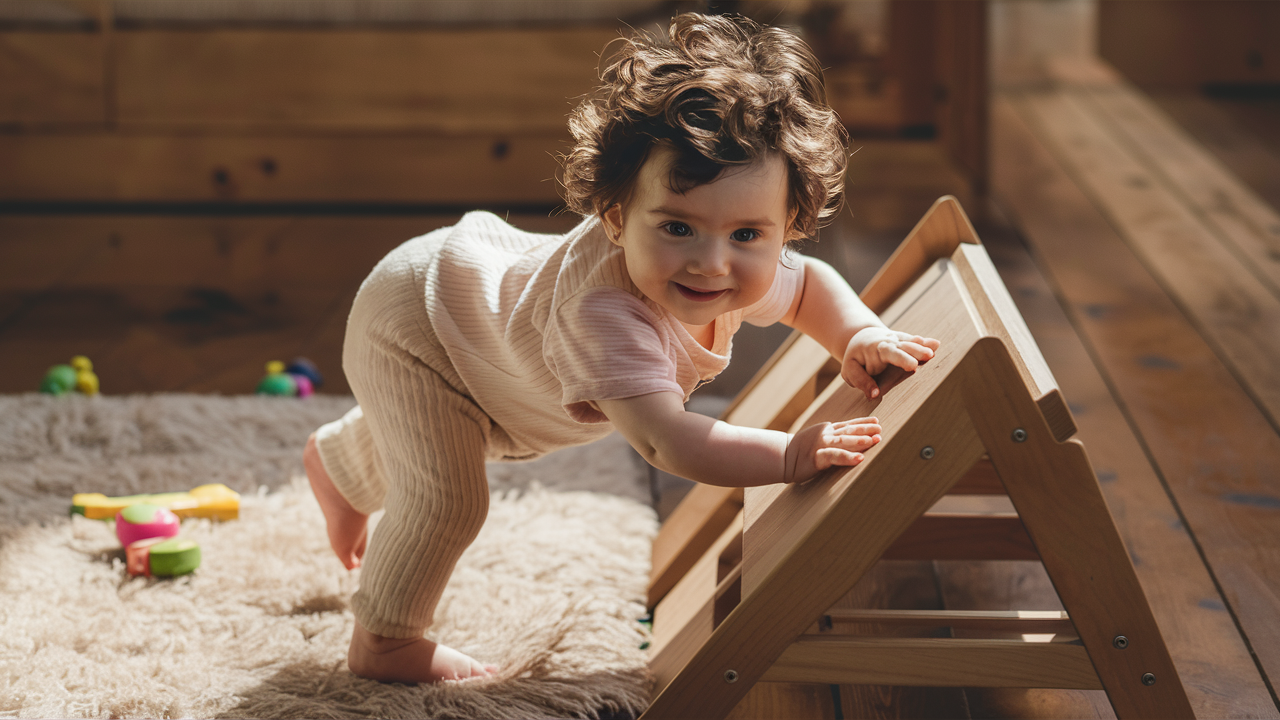
From Crawling Chaos to Climbing Champions: A Playful Journey of Gross Motor Skills
They arrive, a wrinkled miracle, and within a few short months, your tiny tenant transforms from a potato-shaped cuddle monster into a full-fledged explorer – albeit one who navigates by chin and drool. This whirlwind of development is particularly evident in the realm of gross motor skills, the foundational building blocks of movement. Buckle up, parents, because this is where the fun (and the occasional furniture-toppling mishap) begins.
Our little Picassos start with broad, uncoordinated movements. Remember those adorable newborn flails? They’re a precursor to rolling, a skill that usually emerges around 4-6 months, as documented by the American Academy of Pediatrics [1]. This newfound mobility can turn your once-predictable nightscape into a game of hide-and-seek under the crib, a testament to their blossoming spatial awareness.
Crawling, the undisputed star of the 6-10 month show, is a symphony of coordination. As Dr. Juanita Cranston, a renowned pediatric physical therapist, points out in her book « Unlocking Your Baby’s Movement Potential, » crawling strengthens core muscles, promotes hand-eye coordination, and ignites those curious minds [2]. But let’s be honest, crawling can also resemble a particularly enthusiastic breakdancing routine, often with furniture as their breakdance floor. Embrace the chaos, parents! This is their physical language, their way of conquering their world, one wobbly knee at a time.
The pinnacle of this developmental Everest (or should we say playpen?) is, of course, walking. The average timeline puts this momentous occasion between 9 and 18 months, but remember, every child develops at their own pace . While some may beeline for the horizon at lightning speed, others prefer a more scenic stroll (or, shall we say, a strategic furniture-assisted cruise).
Now, the climbing commences! This urge to scale the heights, typically emerging between 8 and 12 months , can leave parents feeling like they’re living in a jungle gym. But fear not, this is a natural progression, a testament to their growing strength and burgeoning sense of adventure.

So, how can we cultivate these gross motor skills and transform our homes into playgrounds (without sacrificing our sanity)? Let’s get playful!
Tummy Time: This isn’t torture, it’s training! Studies by the National Strength and Conditioning Association show that tummy time strengthens those all-important neck and back muscles, crucial for crawling and future physical feats [5] . Think of it as baby bootcamp – minus the tiny weights.
The Sensory Safari: Exploration is key. Create a safe obstacle course with pillows, blankets, and rolled-up towels. Let them crawl over, under, and around – it’s a sensory adventure and a workout all in one.
Multicultural Movement: Draw inspiration from around the world! In many African cultures, babies are carried on their parents’ backs during daily activities, promoting balance and core strength . Similarly, incorporate elements of yoga or Tai Chi into playtime – a fun way to introduce mindfulness and gentle movement.
Remember, the most important ingredient is joy. Let playtime be a time for connection, laughter, and exploration. Soon, your little explorer will be conquering not just furniture, but the world itself, one giggle and wobbly step at a time.
Now, if you’ll excuse me, I have a date with a rogue sofa and a determined crawler who seems to believe it’s Mount Everest. Wish me luck!

